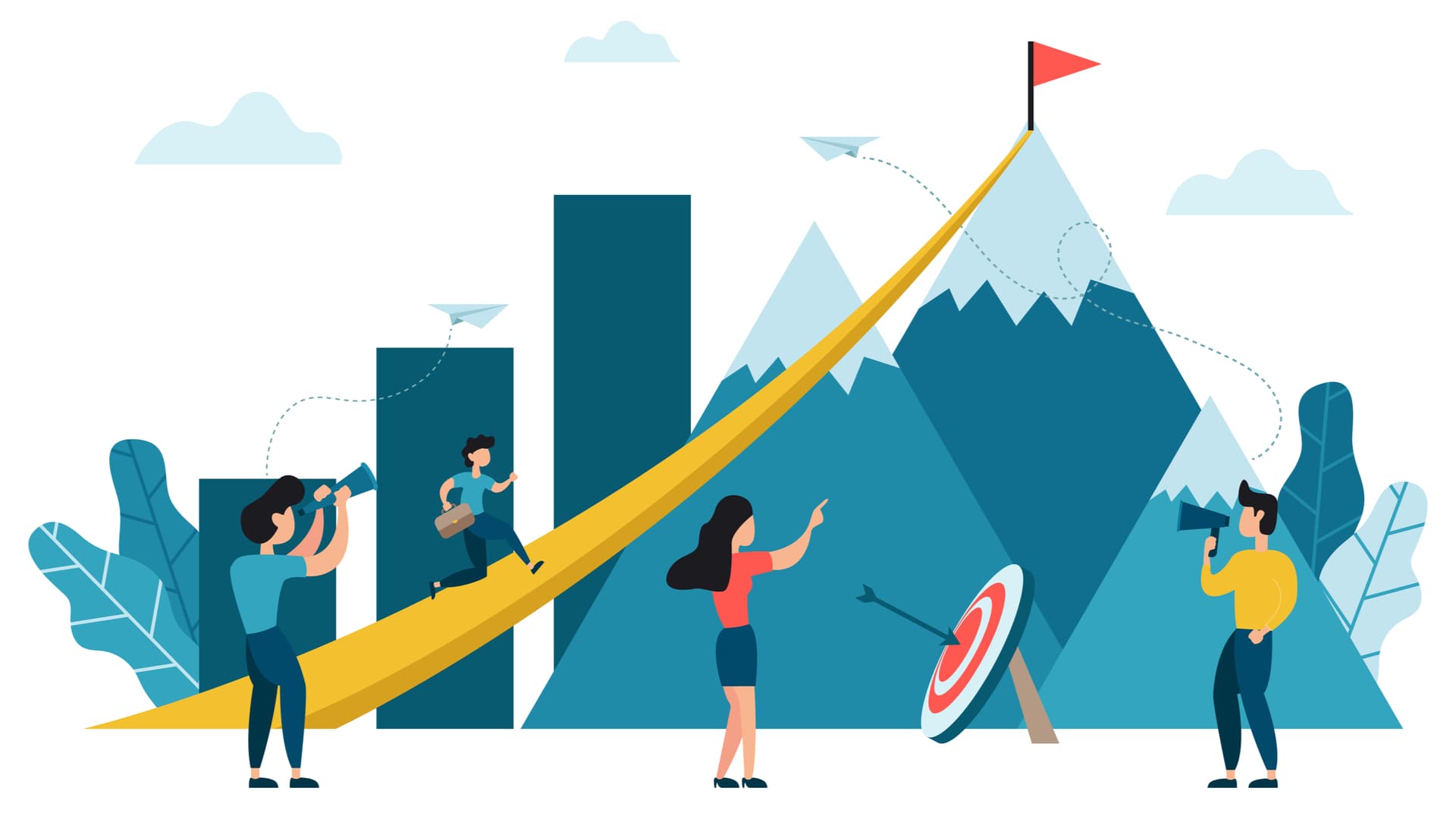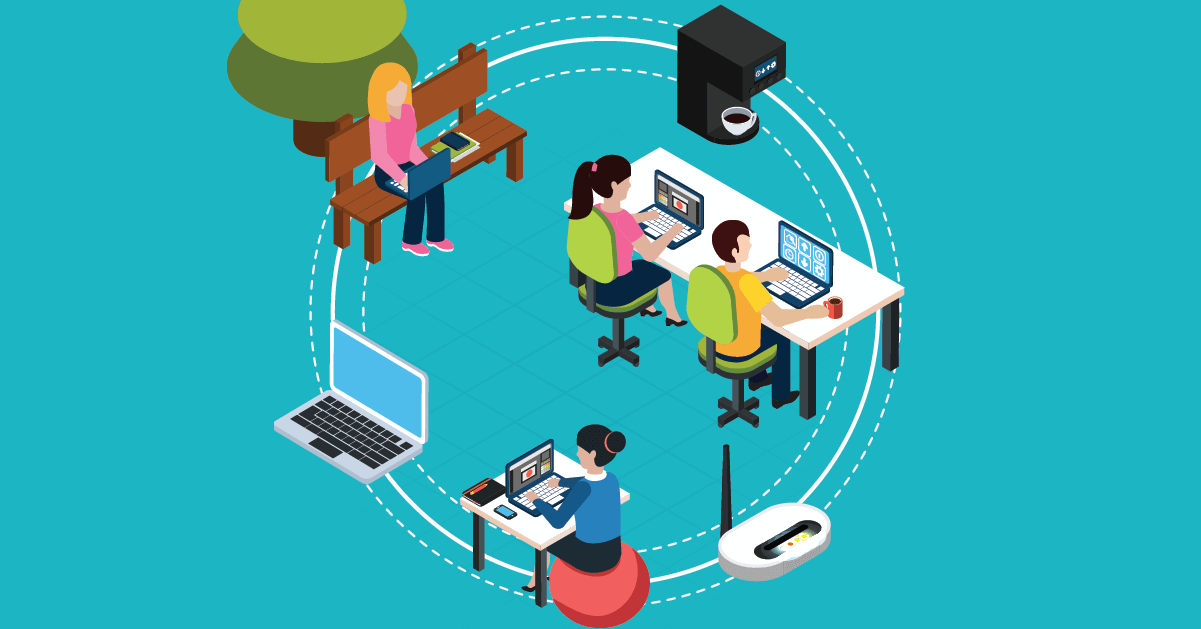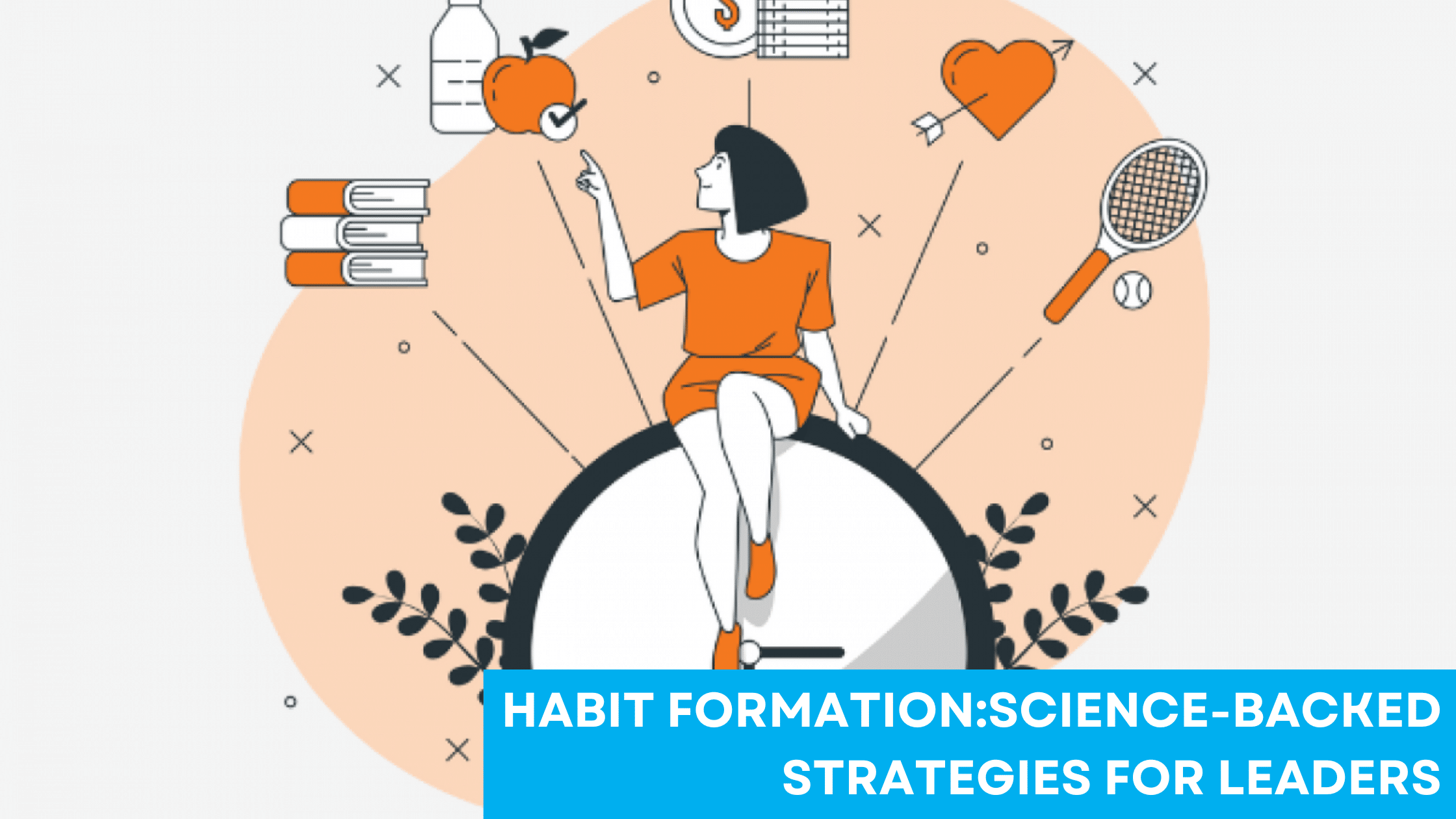The Dilts Pyramid, conceptualized by Robert Dilts, is a comprehensive framework used in Neuro-Linguistic Programming (NLP). It presents a structured approach to understanding and navigating personal change and development complexities.
The model is organized into a hierarchy of levels, each representing a different aspect of human experience, from the environment in which one operates to the overarching purpose and spirituality that guides them.
Robert Dilts, a prominent figure in the development of NLP, crafted the pyramid to facilitate personal growth and transformation. This multi-layered model enables individuals and practitioners to assess and address challenges at multiple levels, ranging from simple behavioral adjustments to deep-seated belief changes.
The Dilts Pyramid’s efficacy in providing a pathway for change stems from its ability to target specific levels, ensuring interventions are appropriately aligned with the desired outcome.
Neuro-linguistic programming (NLP), the foundation of the Dilts Pyramid, is a psychological method that connects thoughts, language, and behavioral patterns developed through experiences to achieve specific results. The Dilts Pyramid applies these NLP principles by assisting individuals in identifying how each level influences the next, thereby offering a clear path for personal development and achieving excellence in various facets of life.
Foundations of the Dilts Pyramid
The Dilts Pyramid is structured to offer a comprehensive framework for personal development and communication. It examines different aspects of human experience using a multilayered approach.
Levels of the Pyramid
The Dilts Pyramid, also known as the Neurological Levels, comprises six ascending levels. Each level offers insights into a different facet of personal change or organizational development.
The levels are, from lowest to highest, Environment, Behavior, Capabilities, Beliefs and Values, Identity, and Spiritual Connection.
Importance of Hierarchical Structure
The hierarchical structure is crucial because it denotes that changes made on upper levels will significantly impact the lower levels. Conversely, lower-level changes can occur without necessarily affecting the higher levels.
Understanding the Base of the Pyramid
Environment, at the base of the Pyramid, represents the external context in which a person operates, including physical spaces and the people around them. Its foundational position implies that while it can be a starting point for change, its influence is less pervasive than that of higher levels.
Applications in Personal Development
Dilts’ Pyramid, often utilized within coaching and self-improvement strategies, is a versatile framework for problem-solving and crafting personal strategies that effectively guide individuals through growth and transformation.
This structure systematically addresses the layers of personal experience, from environmental context to deep-seated beliefs and values.
Coaching and Self-Improvement
In the realm of coaching, Dilts’ Pyramid offers a structured approach for coaches to assist clients in identifying and enhancing their capabilities.
It helps pinpoint the specific level at which a client may encounter obstacles. For instance, if an individual struggles with time management, the coach may examine environmental factors or deeply ingrained beliefs that influence such behaviors.
Problem Solving and Personal Strategy
Regarding problem-solving and personal strategy, the pyramid acts as a diagnostic tool.
Individuals can assess and address challenges at multiple levels, from the immediate environment to core values.
By working up through the levels—environment, behavior, capabilities, beliefs, and identity—solutions become tailored to multiple aspects of the person’s life and personal growth plan.
Growth and Transformation
Growth and transformation are often the ultimate objectives of personal development. Dilts’ Pyramid provides a map for this journey, highlighting how changes in values or beliefs can ripple through all other levels, prompting significant life changes.
It underscores the interconnectedness of personal facets, asserting that true transformation is a holistic process.
Environmental Influence on Behavior
The Environmental Influence on Behavior section explores how Dilts’ Logical Levels model acknowledges the role of home and family contexts and work and business environments in shaping individual actions and patterns.
Home and Family Context
The immediate surroundings at home and the interpersonal dynamics within a family can profoundly impact one’s behavior.
For instance, a supportive family environment fosters confidence and promotes healthier behavioral patterns. Conversely, a chaotic home life may lead to stress and disruptive behavior.
Work and Business Environment
In the workplace, the established culture and norms dictate acceptable behavior.
A positive business environment that values communication and collaboration can enhance employees’ ability to work effectively. On the other hand, an overly competitive or negative corporate culture may provoke counterproductive behaviors.
External conditions, such as economic stability or market pressures, also play a crucial role in shaping the professional behavior of individuals and business entities.
Behaviors and Capabilities
In the context of Dilts’ Pyramid, behaviors and capabilities are critical layers that reveal how individuals interact with their environment and how adept they are at performing various tasks.
These layers encompass habitual activities, practiced skills, and the ability to respond to feedback.
Habits and Actions
Behaviors are the observable actions and reactions that individuals demonstrate in response to their environment. These habits and actions are often automated responses that have been reinforced over time. For example:
- Regular Exercise: A daily habit that enhances physical fitness.
- Procrastination: An action of delay that can hinder productivity.
Skills and Abilities
Moving beyond habitual behaviors, an individual’s skills and abilities reflect their competencies and what they can achieve.
Skills are often acquired through practice and education, contributing to an individual’s capability to perform tasks effectively. Notable abilities include:
- Problem-Solving Skills: The capability to resolve intricate problems.
- Communication Abilities: Proficient in sharing and interpreting information.
Feedback and Adaptation
The capacity for feedback and adaptation is a testament to an individual’s capability to evolve and improve. This involves:
- Receiving and internalizing feedback.
- Adjusting behaviors and enhancing skills accordingly.
By acknowledging feedback and adapting one’s habits and skills, individuals can refine their actions and become more adept at navigating their environment and performing tasks.
Beliefs and Values Formation
The formation of beliefs and values is a critical part of human cognition. Language significantly influences it and aligns with one’s sense of identity and purpose. Beliefs and values are essential for guiding behavior and shaping one’s worldview.
Influence of Language and Thought
Language is a crucial tool in forming and communicating beliefs and values.
It is through language that individuals can articulate their internal thought processes. Complex ideas and abstract concepts become accessible when codified into language structures. For instance, when a person repeatedly uses positive language about themselves, it can strengthen their belief in their own abilities.
Alignment with Identity and Purpose
Beliefs and values are deeply interwoven with one’s identity—the sense of self—and purpose—the driving force behind one’s actions.
A strong alignment among beliefs, values, identity, and purpose produces behavior coherence and integrity. For example, if a person identifies as an environmentalist (identity) and values sustainability (values), they are more likely to engage in recycling and conservation efforts (purpose-driven behavior).
Identity and the Self
In the context of Dilts’ Logical Levels, Identity refers to one’s sense of self and is seen as pivotal in defining one’s roles and personal mission.
Aligning values, beliefs, and capabilities with one’s identity enhances congruence, manifesting in authentic actions and behaviors.
Roles and Personal Mission
Individuals perform various roles in life, each with its implications for personal development and behavior.
Understanding these roles and how they relate to one’s broader personal mission can enhance clarity and purpose. For instance, a person who identifies as a teacher may adopt behaviors and develop competencies aligned with that role, all underpinned by a mission to educate and empower others.
- Key Roles Typically Include: Parent, Leader, Student, Mentor
- Personal Mission: Encompasses goals and objectives tied to one’s identity
Sense of Self and Congruence
A sense of self is deeply rooted in one’s core identity and includes individuals’ fundamental perceptions about themselves.
Congruence occurs when harmony between an individual’s identity, roles, and mission leads to a coherent self-image and consistent behaviors.
Self-Perceptions Influence:
- Choices and behaviors
- Interpersonal relationships
- Reactions to challenges
Congruence Involves:
- Alignment of actions and values
- Authentic expression of self
- Coherence between internal and external worlds
Spirituality and Vision
At the summit of Dilts’ Logical Levels is the domain of Spirituality and Vision. This pinnacle represents the broadest horizon of human experience, embodying one’s ultimate purpose and connection to a larger whole.
It is where one’s deepest values align with a greater mission, reflecting both personal and collective aspirations.
Personal and Spiritual Vision
Individuals formulate a Personal Vision based on their spiritual beliefs and values, which act as a compass for their life’s direction.
This vision reflects one’s innermost convictions and encompasses more than mere professional goals; it is a holistic aspiration that defines what one seeks to achieve on a fundamental level.
The FourWeekMBA website offers insights into how this vision can be seen as a spiritual force that guides and shapes an individual’s path.
Coherence with Greater Goals
The idea of Coherence with Greater Goals implies alignment between one’s personal vision and the objectives of the larger systems they are part of.
This might include their organization’s mission, societal values, or environmental considerations.
The SkillsYouNeed resource suggests that spirituality in this context involves being part of a bigger whole, supporting the idea that individual purposes should harmonize with collective aims.
Such coherence enhances the meaning behind personal ambitions and solidifies one’s role in a broader sphere.
Effective Communication Techniques
Effective communication techniques are crucial for conveying messages clearly and effectively. They involve structured patterns and methods that enhance understanding and engagement.
Public Speaking and Persuasion
Public speaking is the art of effectively delivering a message to an audience.
A well-structured presentation, often using the principles laid out in the Communication Pyramid, ensures the speaker presents their ideas in a clear and logical order.
Persuasion in public speaking involves using rhetorical techniques, such as ethos, pathos, and logos, to influence the audience’s perspective.
- Ethos: Present yourself as credible and respectable.
- Pathos: Appeal to the audience’s emotions.
- Logos: Use logic and evidence to support your argument.
Active Listening and Empathy
Active listening is critical for effective communication.
It is about hearing words and understanding the speaker’s intent and emotions.
Demonstrating empathy—the ability to share and understand another’s feelings—builds rapport and trust during a dialogue.
- Acknowledge: Nod or provide verbal affirmation to show engagement.
- Clarify: Ask questions if a point is not understood.
- Summarize: Paraphrase the speaker’s messages to confirm comprehension.
Leadership and Influence
Leadership involves guiding others toward a goal, while influence is the capacity to affect the character, development, or behavior of someone or something.
Effective leaders use influence to promote and market ideas, shaping both behaviors and outcomes.
Leading with NLP Principles
Using Neuro-Linguistic Programming (NLP), leaders can refine their communication and rapport-building techniques.
The Dilts Pyramid, a framework grounded in NLP, outlines the layered factors that impact human behavior: environment, behavior, capabilities, beliefs and values, identity, and mission.
Leaders proficient in these principles can navigate and influence these levels to inspire organizational change.
Consider the insights on understanding Dilts’ logical levels for a comprehensive understanding.
Promotion and Marketing Influence
Promotion and marketing efforts are driven by the power of influence.
Strategies that resonate on an emotional level—aligned with beliefs and values—tend to be most effective.
The Dilts Pyramid suggests that for a marketing campaign to be influential, it should not only introduce skills or capabilities (like product uses) but also connect deeply with the consumer’s identity or mission.
Transparent and engaging techniques can establish a brand’s integrity and lead to long-lasting customer loyalty.
To delve into how this model can be practically applied in career development and educational settings, see Using the Dilts Pyramid for Success.
NLP in Professional Coaching
Neuro-linguistic programming (NLP) provides a robust framework for professional coaching. Its goals are to improve the coach’s effectiveness during sessions and build dependable client relationships.
Coaching Session Structure
A coach utilizes NLP techniques to enhance the structure of each coaching session.
This may involve setting clear intentions and outcomes at the beginning to provide a roadmap for both the coach and the client.
They typically incorporate specific strategies like goal setting and feedback models to navigate the session toward a solution.
The problem-solving process within NLP is iterative and layered, allowing clients to tap into deeper insights and actions as the session progresses.
Building Client Relationships
The foundation of NLP in coaching lies in building strong client relationships.
A coach’s skills in rapport-building, active listening, and empathetic communication are essential.
They leverage NLP tools such as mirroring and matching language patterns to align closely with the client’s perspective.
This helps to establish trust, creating a supportive environment where clients feel understood and open to exploring challenges. A coach’s ability to remain neutral while maintaining a confident and knowledgeable presence encourages clients to engage deeply in the coaching process.




